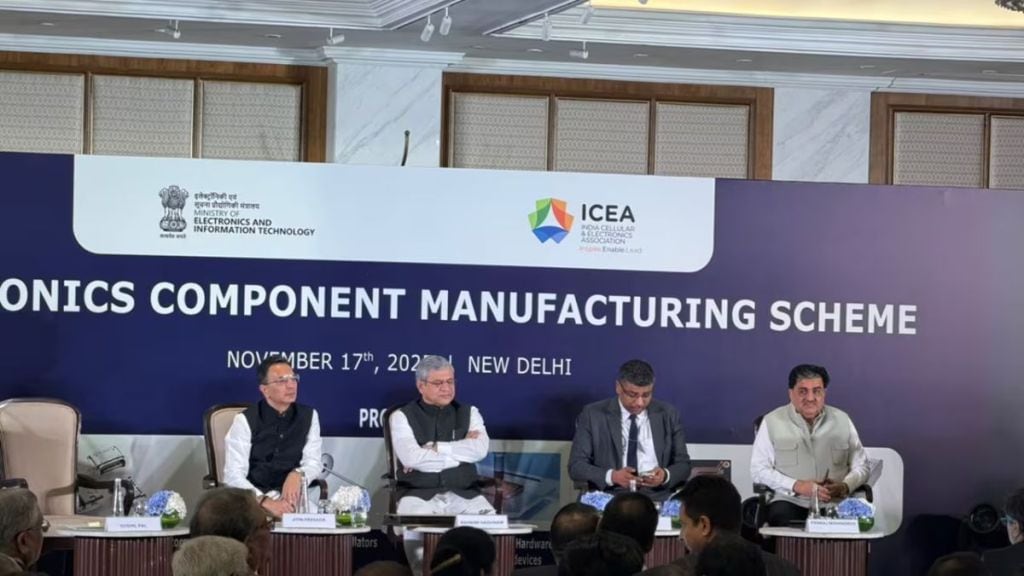The government on Monday approved 17 new projects worth Rs 7,172 crore under Electronics Components Manufacturing Scheme (ECMS), raising total approvals to 24.
The newly sanctioned proposals are projected to generate around Rs 65,000 crore worth of incremental production, creating 11,808 new jobs according to official estimates, and are spread across nine states-Karnataka, Maharashtra, Tamil Nadu, Gujarat, Madhya Pradesh, Andhra Pradesh, Uttar Pradesh, Goa and Jammu & Kashmir, marking a shift towards wider geographical distribution instead of concentration around existing hubs.
The players include Jabil Circuit India, Aequs Consumer Products, Uno Minda, ASUX Safety Components India, Zetfab India, TE Connectivity India, Syrma Mobility and Meena Electrotech, among others. “This marks the first time that optical transceivers and quartz crystal oscillators will be manufactured in India, along with 40-layer PCBs,” Electronics and IT Minister, Ashwini Vaishnaw said at an industry event, calling them as “high-precision components that deepen India’s electronics value chain beyond assembly-led manufacturing”.
The components cleared under the latest tranche include camera modules, connectors, multilayer PCBs, oscillators, optical transceivers and high-strength enclosures.
Officials said this tranche would close several structural gaps in the domestic components ecosystem by enabling capacity creation in sub-systems that have historically been fully import-dependent.
The government expects the approved projects to meet more than 25% of domestic multilayer PCB requirement, approximately 17–18% of both camera module and oscillator demand, and more than 100% of optical transceiver demand, creating an export-addressable surplus in that category.
The approvals for optical transceiver are said to be strategically important since these components are core to data centres, fibre backhaul, cloud infrastructure and AI-grade compute connectivity, all of which are seeing accelerated domestic capacity expansion.
Vaishnaw said the scheme’s design aligns with a staged localisation roadmap, where final-product manufacturing scale is followed by progressive substitution of imported sub-components, material inputs, and eventually design-led innovation.
“Our objective is to transition into a product nation, not just a large-volume manufacturing nation,” Vaishnaw said, adding that Indian firms must build design engineering teams, quality-certification roadmaps and domestic sourcing strategies, even where not mandated on paper. The minister further said that the government’s next set of priorities would focus on process tooling, material ecosystems and precision equipment capabilities.
Senior officials said while ECMS remains incentive-anchored, the broader policy approach now focuses on qualitative capability-building, not merely investment ticket size or output numbers. “The idea of the scheme is to look at more forms of electronics like auto and consumer electronics other than mobile phones, which constitute 45% of the overall industry,” IT Secretary S Krishnan said, adding that the clearance of the following applicants under the scheme would depend on the speedy execution.
As per the ministry, the proposed investments have moved beyond established industrial belts to Tier-2 and Tier-3 locations, with the expectation of reduced talent migration pressure, lower land acquisition costs, and improved labour participation rates.
Separately, the government announced the launch of ARKA-GKT1, the country’s first energy-efficient edge platform-on-chip, jointly developed by Cyient Semiconductors and Azimuth AI, aimed at smart utilities, industrial IoT, and high-efficiency power systems.

